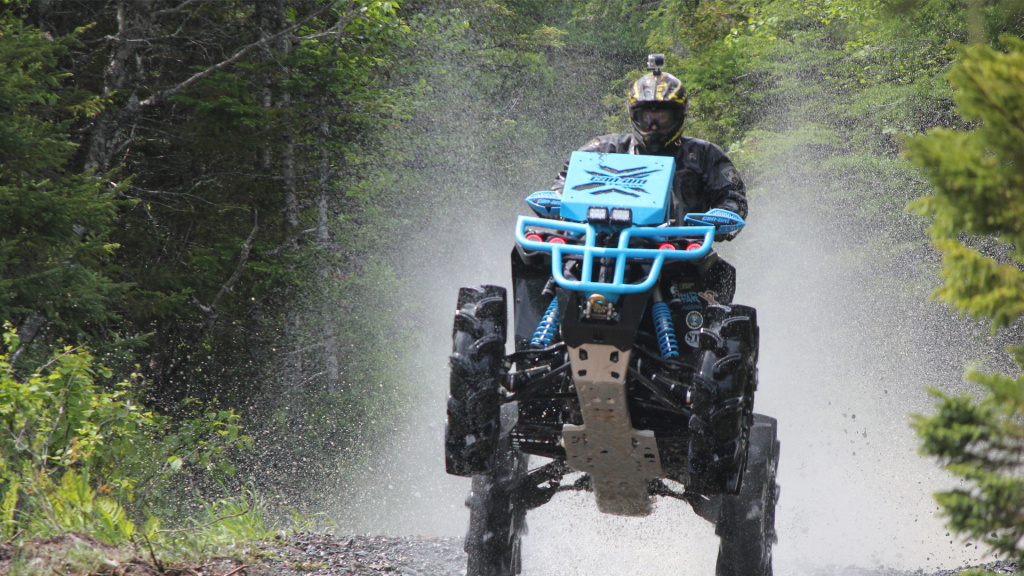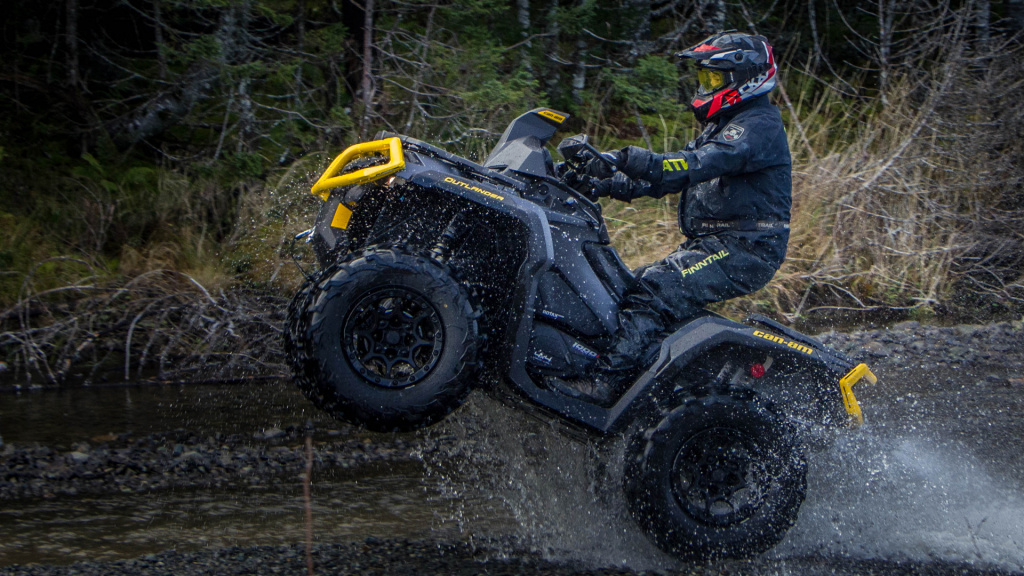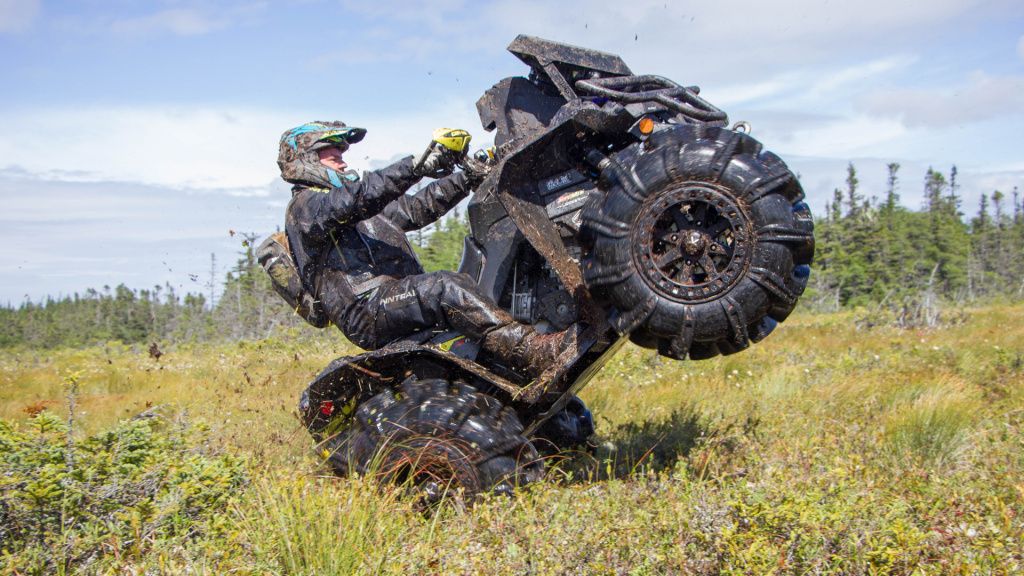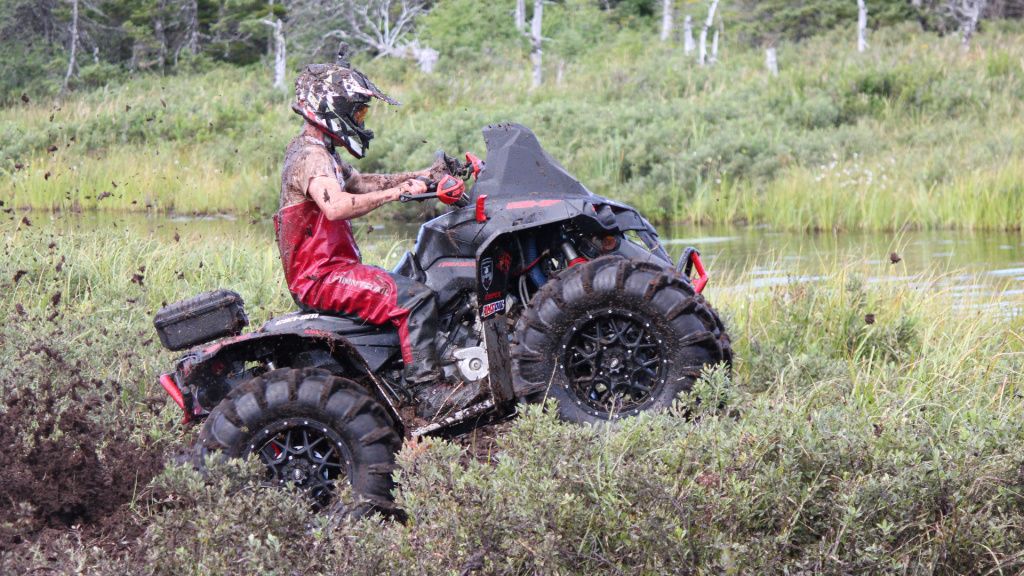How to Wheelie Your ATV
If you're venturing into the world of ATV tricks, one of the first things you'll probably want to know is how to wheelie your ATV. This seemingly simple trick requires knowledge and precision to start and to maintain for long stretches. Read this post to prepare yourself for wheelie success.
Why You Need to Know How to Wheelie an ATV

Simply, it is amazing. Whether you want to do some spins or you want to wheelie thousands of feet at 40-50 mph, wheelies are satisfying to achieve and a joy for others to watch.
You don't want to just wing it. This is a trick after all, so you're upping your risk. You need to be properly suited up in safety gear and to learn what you're doing before you try it. As with anything else on your ATV, slower and smarter is better than rushed and crashed.
How to Prepare Your ATV to Do a Wheelie

There are some things you need to do to your machine before you try a wheelie.
Controls
Make sure all the controls on your ATV are in fine working order, particularly the throttle, clutch, and rear brake. If they show signs of wear or aren't clean, take care of that before trying your wheelie.
Grab Bar or Wheelie Bar
If you don't already know its name, that bar on the back of your ATV that you often use when lifting the tires off the ground or when loading and unloading your ATV is called a grab bar or a wheelie bar. It can save your neck if you mess up your wheelie because you can grab it and prevent the ATV tipping backwards on top of you. You'll want to make sure your grab bar is secure, straight, and solid. If you see any signs of damage or wear, replace it.
Tire pressure
Make sure your tires have the correct and even pressure so you get a balanced wheelie.
Sprockets
You shouldn't have to do anything to your sprockets to do a wheelie on your ATV, but some people do "gear down" their ATV, or switch their rear sprocket so it is larger than their front sprocket, to reduce their top speed and increase acceleration which can help with performing a wheelie.
Aftermarket pipe
Again, this isn't necessary, but some people enjoy upgrading their exhaust pipe to get more low end torque to help when lifting into a wheelie. You may particularly feel the need for it on less powerful machines.
Handlebars
Different handlebars aren't required to do a wheelie, but some people find the change helpful. If you are struggling to do a wheelie and feel your existing handlebars are hindering you, feel free to switch them out.
As you might can tell, whether you upgrade your ATV before trying a wheelie is your choice, but you do need to do a little maintenance as described above.
Make sure you have proper safety gear. This is a trick, and therefore, more dangerous than your average ride. Every rider, no matter their experience level, needs to wear the proper safety gear to protect themselves in the event of an accident.
How to Wheelie Your ATV
Wheelie body position
Riding an ATV is all about balance, and this is particularly true when doing a wheelie. Your body position creates the perfect balance point where the ATV stays upright without falling forward or backward, making the wheelie possible and stable.
Feel your position as you enter the wheelie. If you are too far back, you'll feel like you're tipping backwards. If you are too far forward, you'll have to give your ATV too much power to keep the ATV in the air. Either situation can cause you to lose control of the ATV.
Sit down wheelie
To do a sit down wheelie, sit a little further back in the seat than dead center.
When sitting down, you will have a little more difficulty getting the wheelie started because you have to lift the front end higher, but you will likely be able to maintain it longer as your body won't tire out as quickly and you can reach the controls more easily. Be aware that it is more difficult to jump off the ATV should the wheelie go bad when you're sitting down.
Stand up wheelie
Stand up wheelies are the easiest and should probably be your go to way to try to learn to do a wheelie. You can see over the handlebars better standing up, it's easier to lift the ATV and get the wheelie started, and you can dismount more easily in this position.
Split wheelie
The split wheelie is a variation of the stand up wheelie where you have your left leg positioned on either the back of the seat or the grab bar. This position gives you better control over your ATV and a better view of how high your front wheels are while retaining your ability to use the rear brake so you can maintain a longer wheelie.
Seat standing wheelie
In this wheelie position, you'll be standing with both feet on either the seat or the grab bar. Should you want to try for lower wheelies, this position makes that possible because most of your body weight is focused on the back of the machine. You can't access the gear shifter or brake in this position, so you'll be stuck in one gear for the entire wheelie.
How to Use the Throttle and Rear Brake in a Wheelie

The throttle makes or breaks both starting and maintaining a smooth wheelie. Once you hit the balance point, you'll want to maintain your throttle.
You can also use your rear brake if your ATV starts wanting to go too far back. A little tap of the rear brake will fix slight tipping. For a more aggressive lean, you will need to give the brake more pressure.
You want to balance throttle use and as little needed braking as possible to achieve a smooth ride. It looks smooth because it is smooth. Minor adjustments will be needed as you wheelie, but they should only be minor. Unless you're about to tip over. A jerky or failed wheelie is better than an accident.
How to Lift Up the Front End

You lift the front end of the ATV by giving the ATV extra throttle. When the wheels are high enough and you reach your balance point, you just need to maintain your throttle and balance.
There are two specific ways to do this. You may need one or both depending on your ATV engine size and the torque you can get.
Powering in
When you want a fast wheelie and you're already at the right speed, you can simply let off the throttle a little and then jam it again while shifting your weight back and pulling back on the handlebars.
As the wheels lift and you feel the balance point, you let off the throttle to where you want to maintain it for that smooth ride and then just keep maintaining.
Clutching in
You don't have to be at speed. In fact, you can even be stopped to clutch into a wheelie. This is good for a quick lift and slower wheelies.
Pull the clutch in, rev the throttle a little, and pop the throttle out while still pressing it. When you hit your balance point, maintain.
How to Steer an ATV in a Wheelie

You steer your wheelie with your body position. Lean to the left to steer left or to the right to steer right. When you've turned all you want, lean a little in the opposite direction and then recenter.
You don't have to shift during a wheelie, but some people like to. If you do, you do it the same way you always do.
As you exit the wheelie, make sure the wheels are turned in the direction you want to go to prevent the ATV from throwing you off when you touch the ground.





